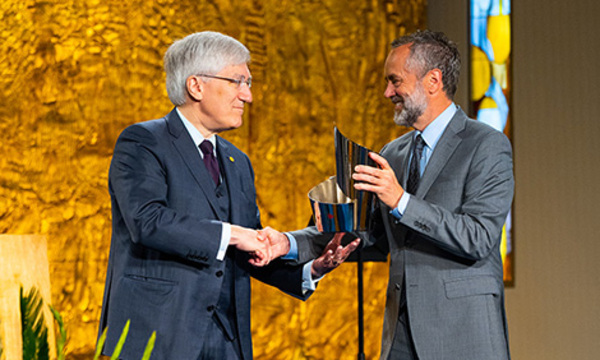is not just for mothers and wives. The poem to the ÔÇťwife of noble characterÔÇŁ is actually about wisdom itself. It is therefore equally applicable to both men and women.
The book of Proverbs is actually framed as a fatherÔÇÖs instructions to his son about the pursuit of wisdom and the fear of the Lord (see Prov. 1ÔÇô9). In the first half of the book, wisdom is presented to the son in the form of a young eligible woman who calls out for a mate (see Prov. 8), and she is contrasted with Lady Folly in Proverbs 9:13ÔÇô18. The son has only two options ÔÇö to seek out Lady Wisdom and live or to follow after Lady Folly and die.
The second half of the book concludes with this same metaphor ÔÇö wisdom personified as a woman. But chapter 31 does not present wisdom as a young eligible maiden like in chapter 8. It rather presents her as the settled and mature wife of a man who has it all (see 31:11, 23).
Personification is not the only literary device that is employed in this poem. Many scholars have suggested that the poem is also chiastic, meaning that the segments in the first half correspond in reverse order to the segments in the second half. When such interconnections are observed, a striking detail is revealed ÔÇö that there is a central verse of the poem which stands alone: ÔÇťHer husband is respected at the city gate, where he takes his seat among the elders of the landÔÇŁ (Prov. 31:23; cf., 12:4). Interestingly, this verse is not about the wife at all. It is a statement about wisdomÔÇÖs husband, who is an honorable community leader. Here we see the ideal picture of a wise man!
Now there is one more literary device that deserves attention in this masterful poem. is an alphabetic acrostic, which means that the initial letters of each verse form the complete Hebrew alphabet. One of the effects that the alphabetic acrostic form can have upon readers is the impression of comprehensiveness, so that a given subject may be summarized from A to Z, so to speak.
So what is summarized here? It can only be wisdom itself. The book of Proverbs concludes with a poem that aims to review and illustrate the teachings of the whole book with a metaphor of the woman who was introduced in chapter 8. It is therefore no coincidence that both the ÔÇťwife of noble characterÔÇŁ and wisdom itself are described as more valuable than rubies (Prov. 3:15; 8:11; 31:10). The wife of noble character is in fact wisdom itself.
In this poem one can see an example of wisdom ÔÇö an illustration of life as it ought to be. There is fulfillment, prosperity, balance, justice, etc. This metaphor of a man who is married to an industrious wife is an ideal picture of the man who chose wisely by embracing Lady Wisdom.
I would suggest that this perfect picture of wisdom is ultimately a revelation of God himself. Proverbs 2:6 shows that God is the source of wisdom, and Proverbs 8:22ÔÇô31 clearly teaches that wisdom preceded the creation of the world (see also Prov. 3:19ÔÇô20; Job 28:23ÔÇô27). Just as the Old Testament reveals GodÔÇÖs wisdom through personification, so the New Testament reveals GodÔÇÖs wisdom through the ultimate personification ÔÇö the man Jesus Christ (see Matt. 11:19; 12:42; 1 Cor. 1:30; Col. 2:3). The point of the poem in Proverbs 31 is to reveal GodÔÇÖs nature by employing an appealing metaphor that beautifully epitomizes the breadth and depth of wisdom.
So we return again to the notion that Proverbs 31 does not merely reveal a model of the perfect wife. Actually, it reveals much more. It is a portrayal of GodÔÇÖs perfect wisdom in action. As such, it is something that all people ÔÇö both men and women ÔÇö must acquire. If GodÔÇÖs people are to become like God and acquire his characteristics (see Eph. 5:1), then they should be a people preoccupied with the pursuit of wisdom.
So where do we start? Wisdom literature repeatedly instructs us to begin with ÔÇťthe fear of the LordÔÇŁ (Prov. 9:10; 15:33; Job 28:28; Eccl. 12:13). It is not surprising, therefore, that the book of Proverbs both opens (Prov 1:7) and closes ÔÇö at the end of our poem (Prov. 31:30) ÔÇö with the fear of the Lord.
 51┬▄└˛
51┬▄└˛
.jpg)

